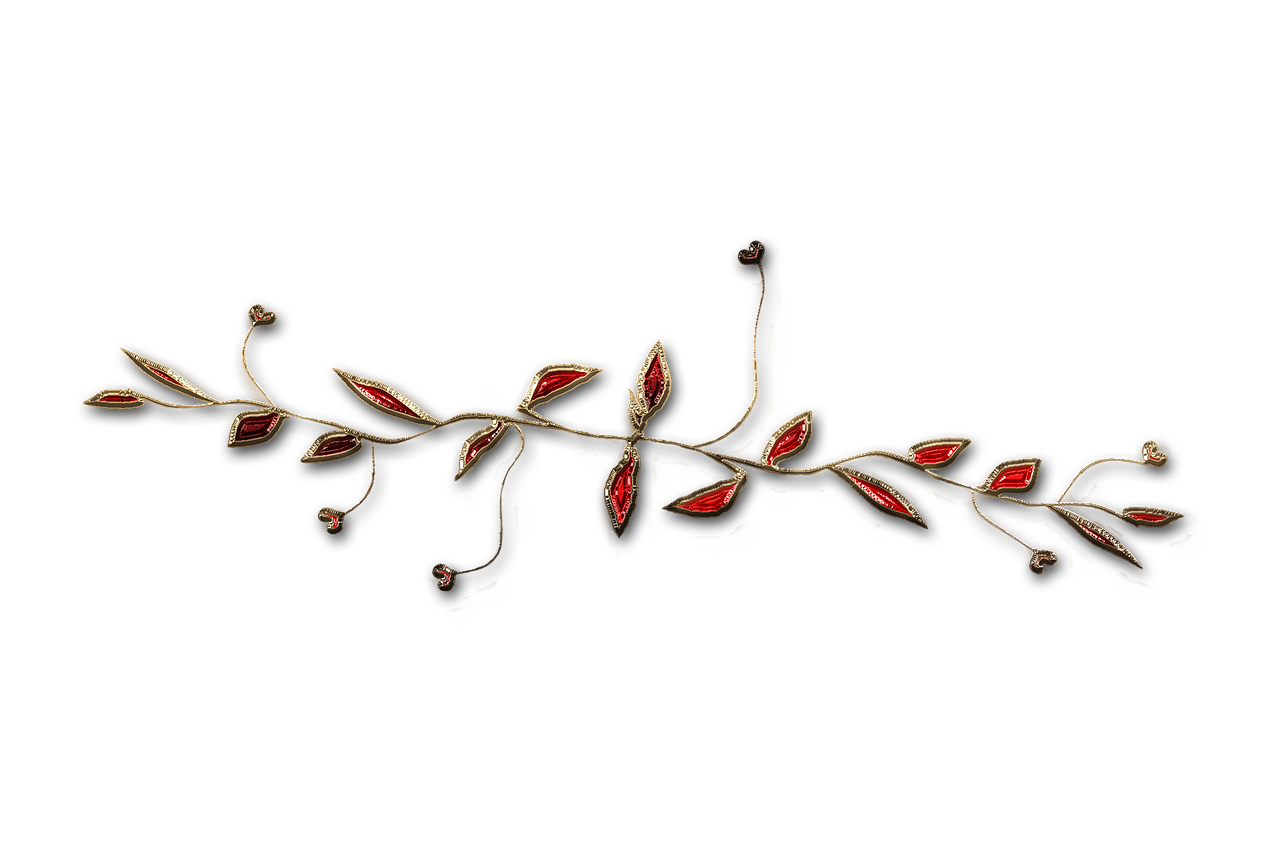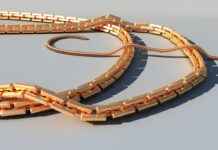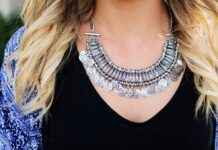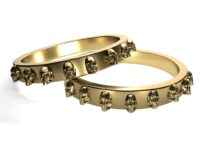This article delves into effective methods and techniques for restoring the beauty of old jewelry, ensuring it shines like new. Discover practical tips and expert insights that will help you rejuvenate your cherished pieces.
Understanding Jewelry Materials
Different jewelry materials require specific care. Understanding the properties of materials like gold, silver, and gemstones is crucial for effective cleaning and restoration.
Essential Cleaning Techniques
Cleaning is the first step in restoring old jewelry. This section covers various cleaning methods, including:
- Ultrasonic cleaners
- Gentle soaps
- Polishing cloths
These methods ensure your pieces regain their luster without damage.
Using Soap and Water
A simple yet effective method involves using mild soap and warm water. Here’s a step-by-step guide:
1. Mix mild soap with warm water.2. Soak the jewelry for a few minutes.3. Gently scrub with a soft brush.4. Rinse with clean water and dry with a soft cloth.
Choosing the Right Soap
Not all soaps are suitable for jewelry cleaning. Avoid harsh chemicals to prevent tarnishing or damaging your pieces.
Drying and Polishing
After cleaning, proper drying and polishing techniques are essential. Use a soft cloth to dry your jewelry without scratching and follow up with a polishing cloth to enhance shine.
Professional Cleaning Services
Sometimes, professional help is necessary. Know when to seek professional cleaning services and how to choose a reputable jeweler.
Repairing Damaged Jewelry
Beyond cleaning, some jewelry may require repairs. Common issues include:
- Broken clasps
- Missing stones
Learn how to address these effectively.
Conclusion
Restoring old jewelry can be a fulfilling process that breathes new life into cherished pieces. By following the tips and techniques outlined in this article, you can ensure your jewelry looks brand new again.
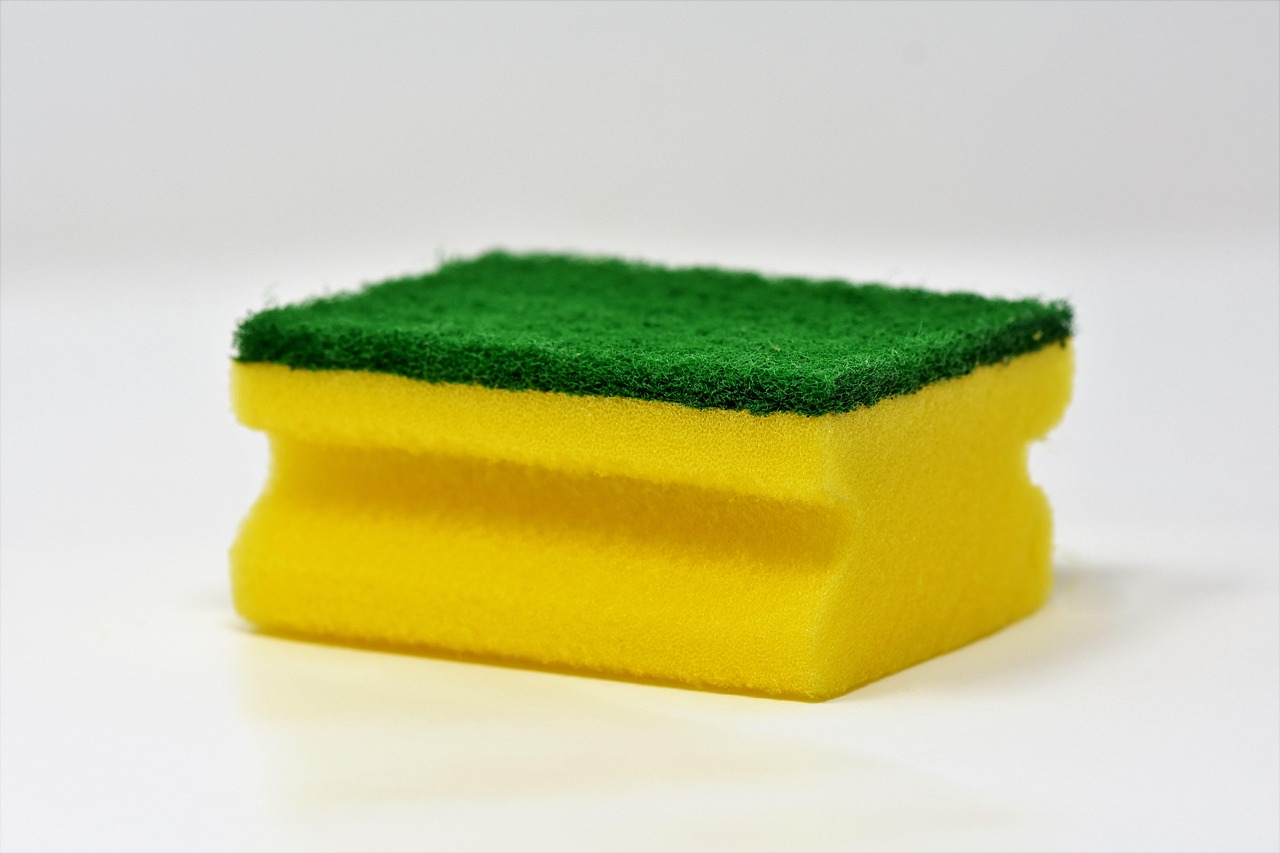
Understanding Jewelry Materials
Jewelry is not just an accessory; it carries sentimental value and often represents significant life moments. However, different types of jewelry materials require specific care to maintain their beauty and integrity. This section discusses common materials such as gold, silver, and gemstones, emphasizing the importance of understanding their properties for effective cleaning and restoration.
- Gold: Known for its durability and resistance to tarnish, gold jewelry can still accumulate dirt and oils over time. It is essential to clean gold pieces regularly using a gentle soap solution. Avoid harsh chemicals that can damage the finish.
- Silver: While beautiful, silver is prone to tarnishing when exposed to air and moisture. To maintain its shine, silver jewelry should be cleaned with a soft cloth and stored in a dry place. For deeper cleaning, a silver polish can be used, but care must be taken not to scratch the surface.
- Gemstones: Each gemstone has unique properties and cleaning requirements. For example, while some stones like diamonds can withstand ultrasonic cleaners, others like opals or pearls may require gentle hand washing with mild soap and water. Always check the specific care guidelines for each gemstone.
Understanding these materials is crucial for preserving the beauty of your jewelry. By knowing how to care for your pieces, you can prevent damage and ensure they remain as stunning as the day you received them. Remember, regular maintenance is key to keeping your jewelry looking its best.
In summary, taking the time to learn about the materials in your jewelry collection will not only enhance its longevity but also allow you to enjoy your cherished pieces for years to come.

Essential Cleaning Techniques
Cleaning is the first and most crucial step in the journey of restoring old jewelry. Over time, cherished pieces can accumulate dirt, oils, and tarnish, dulling their shine and beauty. In this section, we will explore various effective cleaning methods that cater to different types of jewelry, ensuring that your beloved items regain their original luster without risking damage.
- Ultrasonic Cleaners: These devices use high-frequency sound waves to create tiny bubbles in a cleaning solution. When these bubbles collapse, they produce a powerful cleaning action that can remove grime and dirt from intricate designs and hard-to-reach areas. However, it’s essential to check if your jewelry is safe for ultrasonic cleaning, as some gemstones and materials may be sensitive.
- Gentle Soaps: A simple and safe method for cleaning jewelry at home involves using a mixture of warm water and mild soap. This approach is particularly effective for gold and silver jewelry. To clean, soak the pieces for a few minutes, then gently scrub with a soft brush to remove any buildup. Rinse thoroughly and dry with a soft cloth.
- Polishing Cloths: For a quick touch-up, specialized polishing cloths can be incredibly effective. These cloths are treated with cleaning agents that help remove tarnish and restore shine. Simply rub the cloth over your jewelry to bring back its brilliance without the need for water or soap.
- Steam Cleaning: For a deeper clean, steam cleaning can be an excellent option. This method uses high-pressure steam to lift dirt and grime from the surface of the jewelry. It’s particularly useful for pieces with intricate settings but should be performed by professionals to avoid damage.
By employing these cleaning techniques, you can ensure your old jewelry not only looks refreshed but also maintains its integrity. Remember to always assess the materials of your jewelry before choosing a cleaning method, as different materials require specific care to prevent damage.
Using Soap and Water
Cleaning your jewelry at home can be a simple yet effective process, especially when using mild soap and warm water. This method is gentle enough to avoid damaging your precious pieces while effectively removing dirt and grime. Here’s a step-by-step guide to help you safely clean your jewelry:
- Gather Your Supplies: You will need a small bowl, warm water, mild soap (such as dish soap), a soft toothbrush or cloth, and a clean, dry towel.
- Prepare the Cleaning Solution: In the bowl, mix a few drops of mild soap with warm water. Ensure the water is not too hot, as extreme temperatures can affect certain materials.
- Soak the Jewelry: Place your jewelry in the soapy water and let it soak for about 10-15 minutes. This will help loosen any dirt or buildup.
- Gently Clean: Using a soft toothbrush or cloth, gently scrub the jewelry, focusing on crevices where dirt may accumulate. Be careful with delicate pieces, especially those with gemstones.
- Rinse Thoroughly: After cleaning, rinse the jewelry under lukewarm running water to remove any soap residue. Make sure to close the drain or use a strainer to prevent losing any small pieces.
- Dry and Polish: Pat the jewelry dry with a clean, soft towel. If desired, you can use a polishing cloth to enhance the shine of the piece.
By following these steps, you can effectively clean your jewelry at home, making it look brand new again. Regular maintenance using this method can help preserve the beauty and longevity of your cherished items.
Choosing the Right Soap
When it comes to cleaning jewelry, selecting the appropriate soap is crucial to maintain its beauty and integrity. Not all soaps are created equal, and using the wrong type can lead to tarnishing or damaging your cherished pieces. This section will guide you through the best practices for choosing the right soap for your jewelry cleaning needs.
Firstly, it is essential to opt for mild, non-abrasive soaps. Soaps that are specifically formulated for delicate items, such as baby shampoo or gentle dish soap, are ideal choices. These soaps are less likely to contain harsh chemicals that can strip away the protective coatings on your jewelry.
On the other hand, you should avoid soaps that contain strong fragrances, dyes, or abrasive particles. These ingredients can cause discoloration or scratches on your jewelry, particularly on softer metals like silver or gold. Additionally, soaps with alcohol or ammonia can be detrimental, especially to gemstones and pearls, as they can cause cloudiness or damage.
| Type of Soap | Suitability for Jewelry Cleaning |
|---|---|
| Baby Shampoo | Highly recommended; gentle and safe for most materials |
| Gentle Dish Soap | Good choice; effective for general cleaning |
| Antibacterial Soap | Avoid; may contain harsh chemicals |
| Soaps with Fragrance | Avoid; can cause discoloration |
To clean your jewelry effectively, mix a few drops of the chosen soap with warm water. Soak your jewelry briefly, then use a soft cloth or a soft-bristled toothbrush to gently scrub away dirt and grime. Rinse thoroughly with clean water and dry with a microfiber cloth to avoid scratches.
In conclusion, choosing the right soap is a vital step in the jewelry cleaning process. By selecting mild, non-abrasive options and avoiding harsh chemicals, you can ensure your jewelry remains beautiful and undamaged for years to come.
Drying and Polishing
your jewelry after cleaning is crucial to maintain its beauty and prevent any potential damage. This section provides essential techniques to ensure that your cherished pieces not only dry effectively but also shine brilliantly.
Once you have cleaned your jewelry, the next step is to dry it properly. Here are some tips:
- Use a Soft Cloth: Always opt for a soft, lint-free cloth to gently pat your jewelry dry. Avoid using paper towels or rough fabrics that might scratch the surface.
- Avoid Direct Heat: Never use hair dryers or other heat sources to speed up the drying process. Instead, let your jewelry air dry in a safe place away from direct sunlight.
- Inspect for Residue: After drying, check for any soap or cleaning solution residue. If any remains, gently wipe it away with a clean, damp cloth.
After your jewelry is completely dry, it’s time for polishing. Polishing enhances the shine and can remove any minor scratches. Here are some best practices:
- Choose the Right Polish: Use a polish specifically designed for the type of metal your jewelry is made of. For example, silver polish for silver pieces and a gentle jewelry cleaner for gold.
- Use a Polishing Cloth: A microfiber or specially designed polishing cloth can help restore shine without scratching the surface. Gently rub the piece in a circular motion.
- Be Gentle: When polishing, apply light pressure. Over-polishing can lead to wear and tear, especially on softer metals and delicate gemstones.
In summary, proper drying and polishing techniques are essential to keep your jewelry looking its best. By following these guidelines, you can ensure that your treasured items maintain their brilliance and charm for years to come.
Professional Cleaning Services
When it comes to maintaining the beauty of your jewelry, sometimes professional help is necessary. This section outlines the key moments when you should consider seeking professional cleaning services, what you can expect during the process, and how to choose a reputable jeweler to ensure your precious pieces receive the care they deserve.
- When to Seek Professional Cleaning: If your jewelry has noticeable tarnish, dirt buildup, or has not been cleaned in a long time, it may be time to consult a professional. Additionally, if you own antique or delicate pieces, professional care is crucial to avoid damage.
- What to Expect: When you take your jewelry to a professional cleaner, they will typically assess the condition of each piece. Expect a thorough cleaning process that may include ultrasonic cleaning, steam cleaning, or polishing. The jeweler will also check for any loose stones or damage that may need repair.
- Choosing a Reputable Jeweler: Look for jewelers with positive reviews and a solid reputation in your community. Ask for recommendations from friends or family and check online platforms for customer feedback. A good jeweler will be transparent about their cleaning methods and pricing.
In summary, while DIY cleaning methods can be effective, there are instances where the expertise of a professional is invaluable. By recognizing when to seek help and knowing what to expect, you can ensure your jewelry remains in pristine condition for years to come.
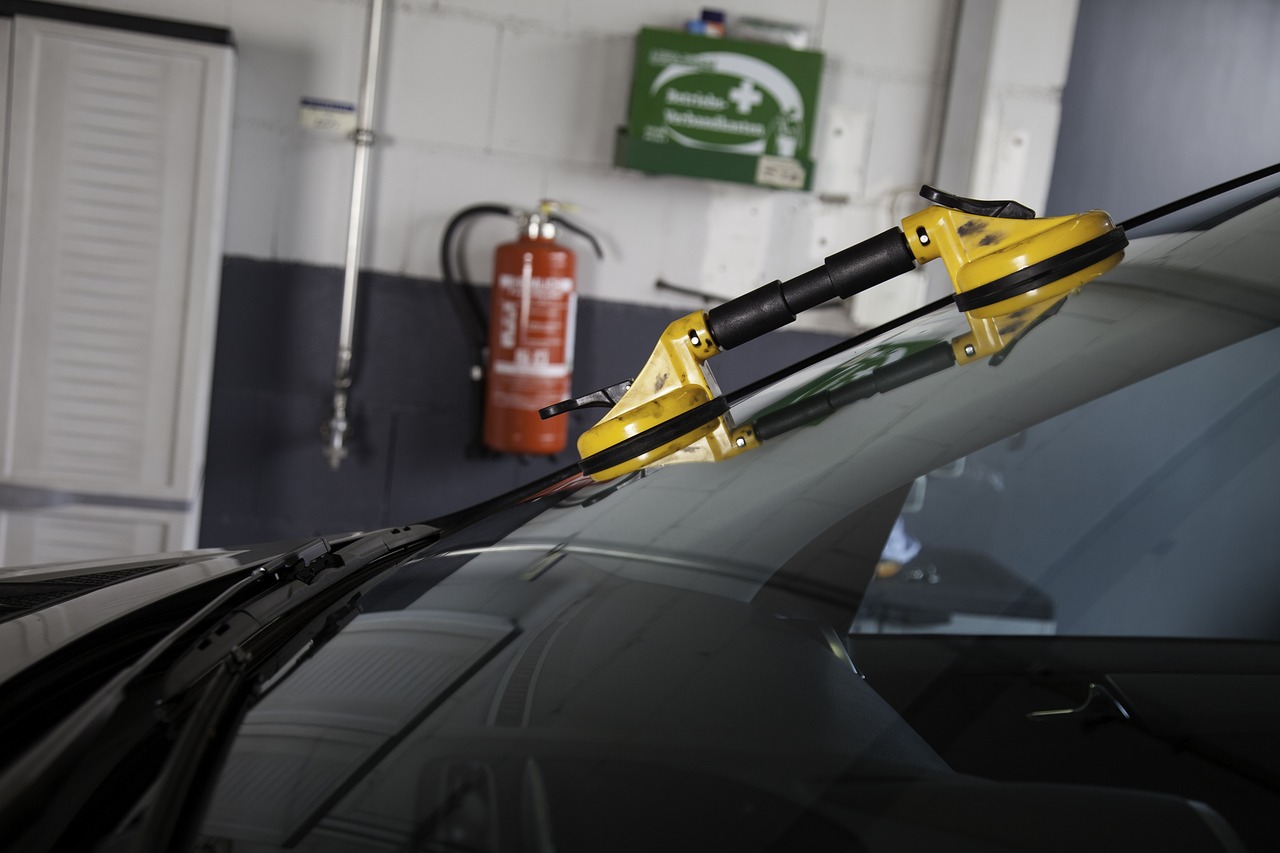
Repairing Damaged Jewelry
Jewelry holds sentimental value and can be a significant part of our personal style. However, over time, even the most cherished pieces can suffer from wear and tear. Understanding how to effectively repair damaged jewelry is essential for maintaining its beauty and functionality. This section delves into common issues that jewelry faces, such as broken clasps and missing stones, and provides practical solutions for addressing these problems.
Common Jewelry Issues
- Broken Clasps: A broken clasp can make a necklace or bracelet unusable. It’s essential to identify the type of clasp you have, as some are easier to repair than others.
- Missing Stones: Losing a gemstone can be disheartening. Knowing how to replace or reset stones is crucial for restoration.
- Tarnished Metal: Even if the structure of the jewelry is intact, tarnishing can detract from its appearance.
Fixing Broken Clasps
When dealing with a broken clasp, you have two main options: DIY repairs or professional assistance. For simple clasps, you can often find replacement parts at craft stores. Follow these steps:
- Remove the old clasp using pliers.
- Attach the new clasp securely.
- Test the clasp to ensure it functions properly.
If the clasp is complex or the jewelry is valuable, it’s advisable to consult a professional jeweler for repairs.
Replacing Missing Stones
Replacing a missing stone involves several steps:
- Identify the Stone: Determine the type of stone and its size.
- Sourcing a Replacement: Look for matching stones online or at local jewelers.
- Professional Resetting: If you’re unsure about resetting the stone yourself, seek help from a professional to ensure it’s securely placed.
In conclusion, repairing damaged jewelry not only restores its beauty but also preserves the memories associated with it. Whether you choose to tackle repairs yourself or seek professional help, understanding the common issues and solutions can help you maintain your jewelry’s charm for years to come.
Fixing Broken Clasps
Broken clasps can render your favorite jewelry unusable, making it essential to address this common issue promptly. A clasp is more than just a functional component; it also contributes to the overall aesthetic of the piece. Fortunately, there are several DIY fixes you can try before seeking professional help.
Identifying the Type of Clasp
Before attempting any repairs, it’s crucial to identify the type of clasp you are dealing with. Common types include:
- Lobster clasps
- Spring ring clasps
- Magnetic clasps
- Box clasps
Each type has its own mechanism, and understanding how they work will guide your repair efforts.
DIY Repair Techniques
Here are some effective methods for fixing broken clasps:
- Reattaching a Lobster Clasp: If the clasp has come off, you can use pliers to gently open the jump ring and reattach it to the chain before closing it securely.
- Spring Ring Clasp Repair: If the spring mechanism is stuck, try soaking it in warm, soapy water to loosen any debris. If the spring is broken, replacement is necessary.
- Magnetic Clasp Issues: Ensure the magnets are clean and free of debris. If the magnet has come loose, use a strong adhesive to reattach it.
When to Consult a Professional Jeweler
While many clasp repairs can be done at home, some situations warrant professional assistance. If you’re dealing with intricate designs, valuable materials, or if the clasp is beyond simple repairs, it’s best to consult a professional jeweler. They have the tools and expertise to ensure the repair is done correctly without compromising the integrity of your jewelry.
In conclusion, fixing broken clasps can often be a straightforward process with the right techniques. However, knowing when to seek professional help is vital for preserving the beauty and functionality of your cherished pieces.
Replacing Missing Stones
Losing a gemstone can be a disheartening experience, leaving you feeling a sense of loss for a cherished piece of jewelry. Fortunately, there are several options available for replacing missing stones, ensuring that your jewelry can be restored to its former glory.
One of the first steps in replacing a missing stone is to sourcing matching stones. This can be done by visiting local jewelers or searching online marketplaces that specialize in gemstones. It’s essential to consider the type, size, and color of the original stone to find a suitable match. Many jewelers also offer services to help identify the stone type, which can be particularly helpful if you are unsure about the specifics.
Another option is to consult with a professional jeweler who specializes in stone replacement and resetting. These experts can provide valuable insights and may even have access to a wider range of stones than what is available to the general public. Additionally, they can ensure that the new stone is set securely, reducing the risk of future loss.
When considering professional resetting, it’s important to discuss your options thoroughly with the jeweler. They can advise you on the best methods for resetting the stone, whether it involves a simple replacement or a more intricate design adjustment to accommodate the new stone. This is particularly crucial for antique or intricate pieces where the original setting may need to be modified.
In summary, while losing a gemstone can be upsetting, there are effective ways to replace missing stones. Whether you choose to source a matching stone yourself or seek the expertise of a professional jeweler, restoring your jewelry can bring back its beauty and sentimental value.
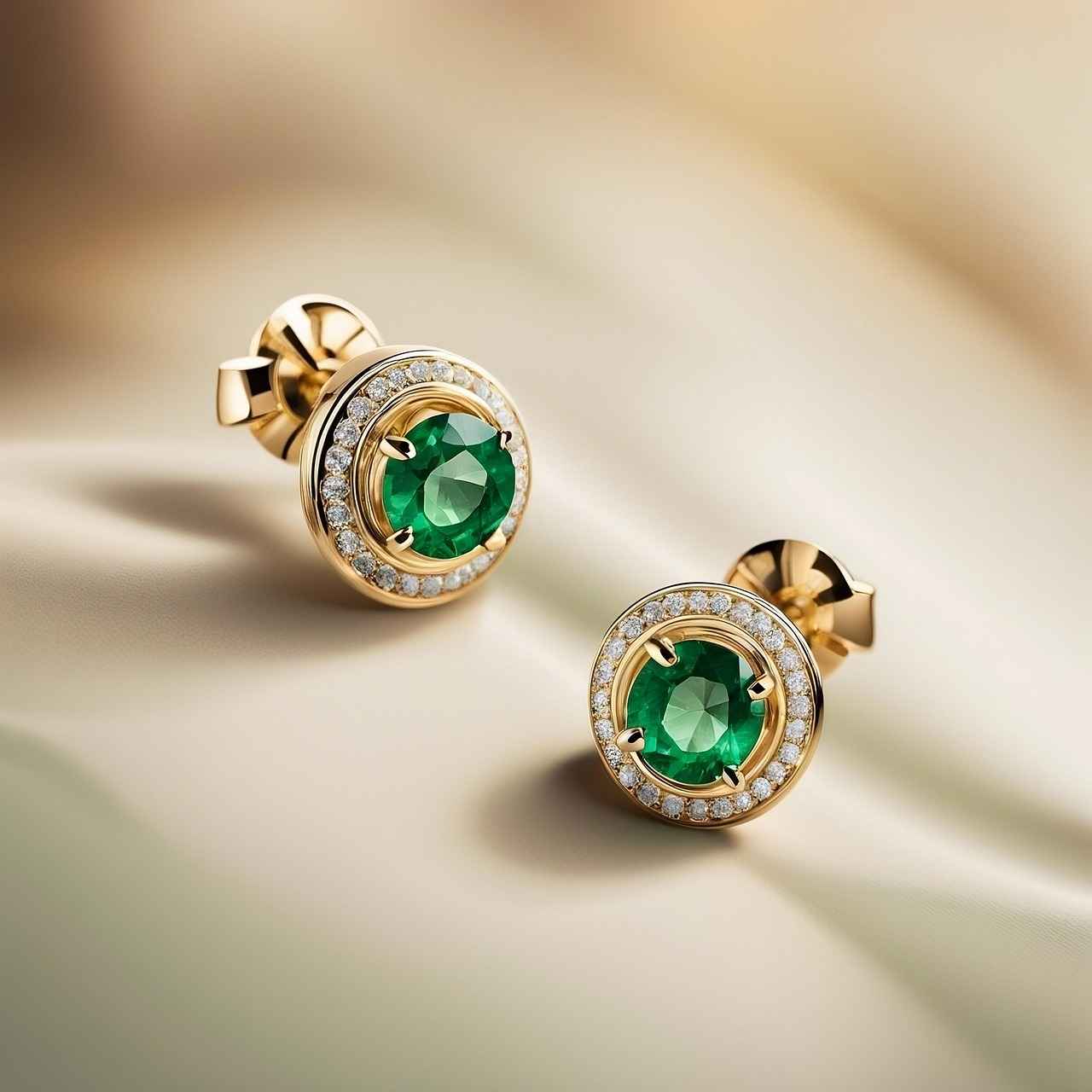
Restoring Antique Jewelry
is a delicate process that requires a deep appreciation for history and craftsmanship. Antique pieces often carry stories and memories, making their restoration not just about aesthetics but also about preserving their historical value. In this section, we will explore essential techniques and considerations that can help you restore vintage jewelry while honoring its past.
When it comes to restoring antique jewelry, the first step is to assess the condition of the piece. Look for signs of wear, such as tarnishing, loose stones, or broken clasps. Understanding the materials used in the jewelry is crucial, as different metals and gemstones require specific care. For instance, gold can typically withstand more rigorous cleaning methods than pearl or turquoise, which are more delicate.
- Cleaning Techniques: Gentle cleaning is essential. Use a soft brush and mild soap to remove dirt without damaging the surface. Avoid harsh chemicals that could strip away the patina.
- Preserving Patina: Patina adds character and value to antique jewelry. When restoring, aim to maintain this natural finish rather than removing it entirely.
- Repairing Damage: For broken clasps or missing stones, consider professional help. A skilled jeweler can ensure that repairs are done correctly, preserving the integrity of the piece.
Another important aspect of restoration is identifying authentic antique pieces. Knowing the age and origin of your jewelry can guide your restoration efforts. Look for hallmarks, stamps, or unique features that indicate its authenticity. This knowledge not only aids in restoration but also enhances the piece’s value.
In conclusion, restoring antique jewelry is a rewarding endeavor that requires careful attention to detail and a commitment to preserving history. By following these techniques and considerations, you can rejuvenate your vintage pieces while honoring their unique stories.
Preserving Patina
Patina is a natural process that occurs over time, giving antique jewelry a unique and often irreplaceable character. While some may view this aging as tarnish, many collectors and enthusiasts appreciate patina as a sign of authenticity and history. Therefore, it is crucial to learn how to maintain this beautiful finish while still ensuring that the piece is clean and well-preserved.
To effectively preserve patina, consider the following techniques:
- Gentle Cleaning: Use a soft, lint-free cloth to gently wipe the surface of the jewelry. Avoid abrasive materials that can strip away the patina.
- Use of Mild Cleaners: If deeper cleaning is necessary, opt for a solution of warm water and a few drops of mild soap. Soak the jewelry briefly, then rinse and dry thoroughly using a soft cloth.
- Avoid Harsh Chemicals: Stay away from commercial cleaners or chemicals that promise to remove tarnish, as they can damage the patina. Always read labels and choose products specifically designed for antique jewelry.
- Storage Considerations: Store your jewelry in a cool, dry place, ideally in a cloth pouch or a jewelry box lined with fabric to minimize exposure to air and moisture, which can accelerate tarnishing.
- Regular Inspections: Periodically check your antique pieces for any signs of wear or damage. Early detection can prevent more significant issues and help maintain the integrity of the patina.
In conclusion, preserving the patina on antique jewelry is about striking a balance between cleaning and maintaining the piece’s historical value. By following these careful practices, you can ensure that your cherished items retain their unique character while remaining in excellent condition.
Identifying Authentic Antique Pieces
is a crucial skill for anyone interested in restoring antique jewelry. Understanding the unique characteristics of genuine pieces can significantly impact their value and the restoration process. In this section, we will explore essential tips for recognizing authentic antique jewelry.
- Check for Hallmarks: Genuine antique jewelry often features hallmarks or maker’s marks. These tiny engravings can indicate the metal’s purity and the manufacturer. Researching these marks can provide insights into the piece’s origin and authenticity.
- Examine the Craftsmanship: Authentic antique jewelry typically showcases superior craftsmanship. Look for intricate details, hand-set stones, and unique designs that reflect the era’s style. Mass-produced pieces often lack this level of detail.
- Assess the Materials: Antique jewelry is usually made from high-quality materials. Familiarize yourself with the types of metals and gemstones commonly used in different periods. For instance, Victorian pieces often feature rose gold, while Art Deco jewelry is known for its geometric designs and use of platinum.
- Look for Signs of Age: Genuine antiques will show signs of wear and age. Inspect the piece for patina, scratches, or slight imperfections that indicate it has been loved and worn over time. Be cautious of items that appear too pristine.
- Consult Experts: When in doubt, seek the opinion of a professional appraiser or jeweler specializing in antique pieces. Their expertise can help confirm the authenticity of your jewelry and guide you in the restoration process.
By following these tips, you can enhance your ability to identify authentic antique jewelry. This knowledge not only aids in restoration but also ensures that you appreciate the historical significance and craftsmanship of these timeless treasures.
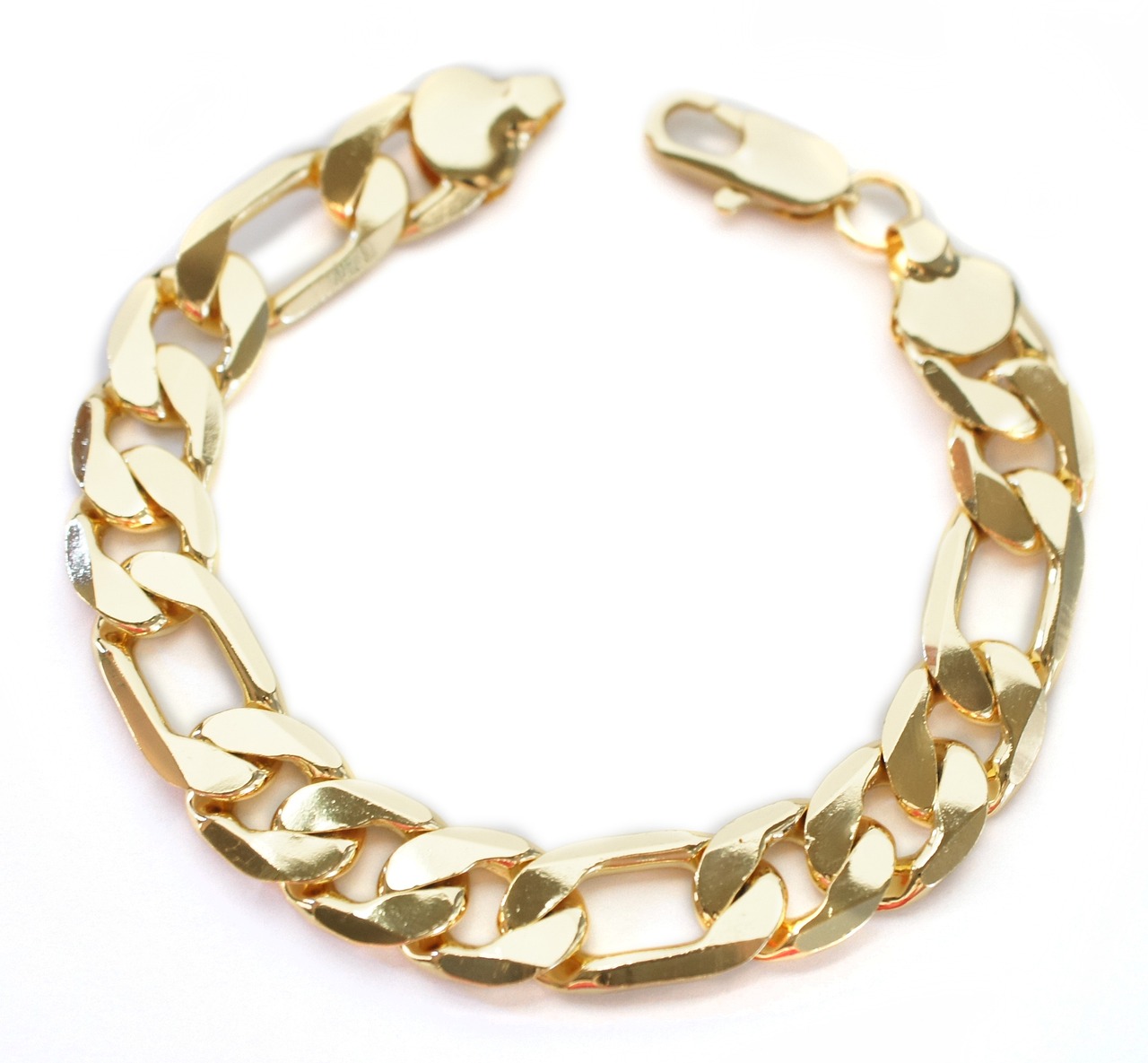
DIY Jewelry Restoration Projects
can be a delightful and fulfilling experience for craft enthusiasts. Breathing new life into old jewelry not only allows for personal expression but also helps preserve memories associated with cherished pieces. In this section, we will explore various creative projects and ideas that can transform outdated jewelry into stunning new designs.
One of the most exciting aspects of DIY restoration is the opportunity to reimagine old pieces. Instead of discarding jewelry that may seem outdated or broken, consider redesigning it. For example, a simple pair of earrings can be transformed into a trendy necklace by combining them with other materials like chains or beads. This not only gives the piece a fresh look but also allows you to showcase your unique style.
Another fun project is creating custom jewelry. This involves taking elements from various old pieces and crafting something entirely new. For instance, you can take a broken bracelet and use its beads to create a pair of matching earrings or a statement ring. This process not only enhances the sentimental value of the jewelry but also makes it a one-of-a-kind accessory.
To help you get started, here are some simple DIY restoration ideas:
- Bead Reworking: Gather old necklaces or bracelets and re-string the beads in a new pattern.
- Color Customization: Use enamel paints or nail polish to add a pop of color to metal pieces.
- Chain Extensions: Add extra links or charms to necklaces for a more layered look.
- Vintage Revival: Combine vintage brooches with modern chains to create unique statement pieces.
In conclusion, DIY jewelry restoration projects not only allow for creativity but also enable you to cherish and wear your favorite pieces in new ways. By exploring these ideas, you can ensure that your old jewelry continues to tell its story while reflecting your personal style.
Reimagining Old Pieces
can be an exciting and creative venture. Many of us have old jewelry pieces tucked away in our drawers, often forgotten and gathering dust. However, with a little imagination, these pieces can be transformed into stunning new designs that reflect your current style and preferences.
When redesigning old jewelry, the first step is to evaluate the materials and components of the piece. Consider the following:
- Assess the Condition: Check for any damage or wear that may need repairing before you start redesigning.
- Identify Usable Elements: Look for stones, beads, or metals that can be reused in your new design.
- Consider the Style: Think about the current jewelry trends and how you can incorporate them into your redesign.
One popular method for repurposing old jewelry is to create a statement piece. For example, you can take a broken necklace and transform it into a unique bracelet or pair of earrings. This not only gives your jewelry a new life but also allows you to express your creativity.
Another approach is to mix and match different elements from various pieces. Combine old brooches with chains to create a trendy necklace or use vintage earrings as pendants. This method not only refreshes your collection but also provides a personal touch to your accessories.
For those who enjoy crafting, consider DIY projects to give your old jewelry a fresh look. Simple tools and materials can help you create beautiful custom pieces. Tutorials available online can guide you through the process, making it an enjoyable experience.
Ultimately, is not just about aesthetics; it’s also about sustainability. By repurposing jewelry, you contribute to reducing waste and promoting eco-friendly practices. So, gather your old pieces and start your transformation journey today!
Creating Custom Jewelry
is a wonderful way to express your individuality and creativity. By transforming old jewelry materials into unique pieces, you not only breathe new life into forgotten treasures but also enhance their sentimental value. This section will guide you through the process of customizing your jewelry, offering practical tips and inspiration.
First, it’s important to assess your old jewelry. Look for pieces that you no longer wear or that have sentimental value but may need a fresh perspective. Consider items like broken necklaces, mismatched earrings, or even family heirlooms that could use a modern twist.
- Gather Your Materials: Collect all the components you want to use, including beads, chains, clasps, and any other decorative elements. This is also a good time to gather tools such as pliers, wire cutters, and adhesives.
- Design Your Piece: Sketch your ideas or create a mood board. Think about how you can combine different materials or styles to create something truly unique.
- Consider Color and Texture: Mixing different textures and colors can add depth to your design. Don’t be afraid to experiment with various combinations!
Once you have your design planned, it’s time to start crafting. Assembly can be a fun and rewarding process. Take your time to ensure each piece is securely attached and arranged as per your vision. If you’re unsure about your skills, there are plenty of online tutorials available that can guide you through specific techniques.
Finally, after completing your custom jewelry, consider how to share your creation. Whether it’s a gift for a loved one or a piece to keep for yourself, showcasing your work can be incredibly fulfilling. You might even want to document the process on social media or start a small business selling your unique designs.
In conclusion, customizing your jewelry allows for deep personal expression and creativity. By repurposing old materials, you not only create something beautiful but also hold onto the memories attached to those pieces. Remember, the journey of creation is just as important as the final product!
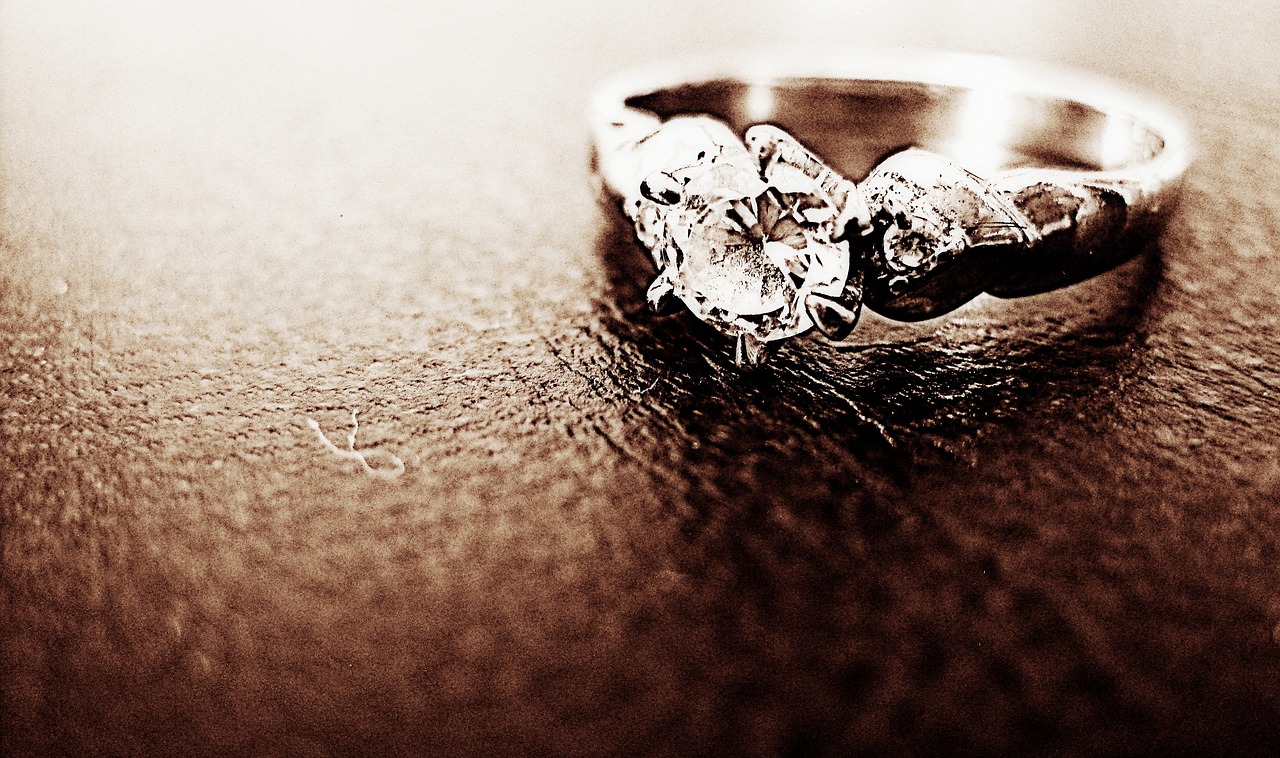
Preventing Future Damage
After successfully restoring your jewelry, it is crucial to take steps to protect it from future damage. Proper care and maintenance can significantly extend the life of your cherished pieces. This section provides valuable tips on storage, handling, and maintenance to ensure your jewelry remains in excellent condition.
Storing your jewelry correctly is essential to prevent scratches, tarnishing, and other forms of damage. Here are some effective storage solutions:
- Use a Jewelry Box: Invest in a quality jewelry box with compartments to keep pieces separate and organized.
- Anti-Tarnish Pouches: Consider using anti-tarnish pouches or cloths for silver jewelry to minimize oxidation.
- Soft Cloths: Wrap delicate items in soft cloths to avoid scratches when storing them together.
- Avoid Humidity: Store jewelry in a dry place, as humidity can lead to tarnishing and deterioration.
Regular maintenance is key to preserving the beauty of your jewelry. Here are some practical tips:
- Routine Cleaning: Clean your jewelry regularly with a soft cloth to remove dirt and oils.
- Inspect for Damage: Periodically check for loose stones, worn clasps, or other signs of wear.
- Avoid Harsh Chemicals: Keep your jewelry away from harsh chemicals, including perfumes and cleaning products, which can cause damage.
- Professional Check-ups: Consider having your jewelry professionally checked and cleaned at least once a year.
How you handle your jewelry can also affect its longevity. Here’s how to handle your pieces with care:
- Put on Last: Always put on your jewelry after applying makeup, perfume, or hair products.
- Remove During Activities: Take off your jewelry during physical activities, swimming, or cleaning to avoid accidental damage.
- Store Separately: Avoid tossing pieces into a drawer together; the friction can cause scratches.
By following these tips for storage, handling, and maintenance, you can ensure that your restored jewelry remains beautiful and lasts for years to come.
Proper Storage Solutions
When it comes to preserving the beauty of your jewelry, play a crucial role. Storing your pieces correctly can significantly reduce the risk of scratches, tarnishing, and other forms of damage. Here, we will explore various storage options that not only keep your jewelry safe but also help you stay organized.
- Jewelry Boxes: Invest in a quality jewelry box with compartments. This allows you to separate different types of jewelry, preventing them from scratching each other. Look for boxes lined with soft fabrics to provide extra cushioning.
- Anti-Tarnish Pouches: For silver jewelry, consider using anti-tarnish pouches. These specially designed bags help to absorb moisture and prevent tarnishing, keeping your silver pieces looking shiny and new.
- Drawer Organizers: If you prefer to keep your jewelry in drawers, use drawer organizers. These can help you categorize your jewelry by type, making it easier to find what you need without rummaging through a tangled mess.
- Wall-Mounted Displays: For those who love to showcase their jewelry, wall-mounted displays can be both decorative and functional. Use hooks or frames to hang necklaces and bracelets, keeping them untangled while adding a stylish touch to your room.
- Travel Cases: If you travel frequently, consider investing in a travel jewelry case. These cases are designed to protect your jewelry during transit, often featuring compartments and secure closures to prevent movement.
In addition to these storage options, remember to regularly check your jewelry for any signs of wear or damage. Keeping your pieces clean and stored properly will help maintain their beauty for years to come. By following these practical storage solutions, you can ensure that your precious jewelry remains in excellent condition, ready to shine whenever you wear it.
Regular Maintenance Tips
Regular maintenance is essential for preserving the beauty and integrity of your jewelry. By following a few practical tips, you can ensure that your cherished pieces remain in excellent condition for years to come. Here are some guidelines on how often to clean and check your jewelry for signs of wear.
- Monthly Cleaning: Aim to clean your jewelry at least once a month. Use a gentle soap solution and a soft cloth to wipe away any dirt or oils that may accumulate.
- Inspect Regularly: Every few weeks, take a moment to inspect your jewelry for any signs of wear, such as loose stones or damaged clasps. Catching these issues early can prevent more significant damage.
- Professional Check-ups: For valuable pieces or those that are worn frequently, consider taking them to a professional jeweler for a thorough inspection and cleaning at least once a year.
- Storage Practices: Store your jewelry in a cool, dry place, preferably in a soft pouch or a lined jewelry box to prevent scratches and tangling.
- Avoiding Harsh Chemicals: Be mindful of exposing your jewelry to harsh chemicals found in cleaning products, lotions, and perfumes. Remove your jewelry before applying these substances.
By implementing these , you can significantly extend the life of your jewelry. Not only will this keep your pieces looking their best, but it will also preserve their sentimental and monetary value. Remember, taking a little time for maintenance can go a long way in ensuring your jewelry remains as stunning as the day you received it.

Conclusion
Restoring old jewelry can be a fulfilling process that breathes new life into cherished pieces. The journey of revitalizing your jewelry is not only about aesthetics but also about preserving memories and stories that come with each piece. By employing the right techniques and understanding the materials involved, you can ensure your jewelry looks brand new again.
In this guide, we will explore effective methods and techniques for rejuvenating old jewelry, allowing you to enjoy your treasured items for years to come. From understanding the different materials used in jewelry to essential cleaning techniques, we will cover everything you need to know.
Different types of jewelry materials require specific care. For example:
- Gold: Durable but can tarnish; needs gentle cleaning.
- Silver: Prone to tarnishing; requires special attention.
- Gemstones: Vary in hardness and sensitivity; cleaning methods depend on the type.
Cleaning is the first step in restoring old jewelry. Here are some effective methods:
- Ultrasonic Cleaners: Great for deep cleaning, but check for gemstone safety.
- Gentle Soaps: Use mild soap and warm water for a simple clean.
- Polishing Cloths: Ideal for adding shine without scratching.
Beyond cleaning, some jewelry may require repairs. Common issues include:
- Broken Clasps: Can often be fixed at home or by a jeweler.
- Missing Stones: Options include DIY replacements or professional resetting.
Antique pieces require special care to maintain their value. Consider the following:
- Preserving Patina: This can add character; clean carefully.
- Identifying Authentic Pieces: Learn to recognize unique characteristics of antiques.
In conclusion, restoring old jewelry is a rewarding endeavor that not only enhances the beauty of your pieces but also preserves their sentimental value. By following the tips and techniques outlined in this article, you can ensure your jewelry looks brand new while cherishing the memories they hold. Take the time to understand your jewelry’s materials, employ effective cleaning and repair techniques, and enjoy the process of bringing your beloved items back to life.
Frequently Asked Questions
- How often should I clean my jewelry?
It’s recommended to clean your jewelry at least once every few months, but if you wear it daily, consider cleaning it every month to maintain its shine and prevent buildup.
- Can I use regular soap to clean my jewelry?
Not all soaps are suitable! Stick to mild, non-abrasive soaps to avoid tarnishing or damaging your pieces. Always check the ingredients before using.
- When should I seek professional help for my jewelry?
If your jewelry has significant damage, like broken clasps or missing stones, it’s best to consult a professional jeweler. They have the tools and expertise to restore your pieces safely.
- What should I do if I lose a gemstone from my jewelry?
First, don’t panic! You can either try to find a matching stone yourself or take it to a jeweler who can help source and reset a new gemstone for you.
- How can I preserve the patina on my antique jewelry?
To maintain the unique character of patina, avoid harsh cleaning methods. Instead, use a soft cloth and gentle cleaning techniques that won’t strip away the patina.
- What are some good storage solutions for my jewelry?
Consider using a jewelry box with compartments, soft pouches, or anti-tarnish strips to keep your pieces organized and protected from scratches and tarnishing.

